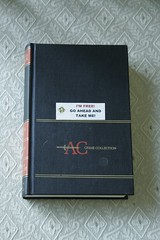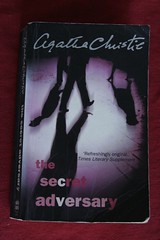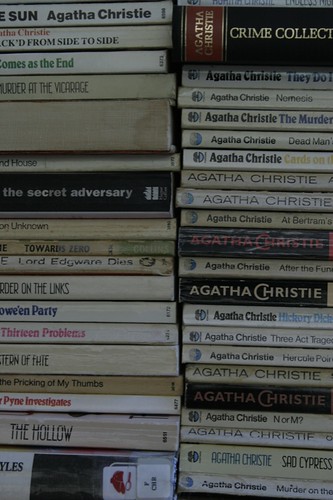5 – Poirot Investigates (1924)
Short Stories (Featuring: Poirot and Hastings, Inspector Japp makes an appearance)

KATHRYN SAYS:
So Poirot Investigates is the first short story collection that we’ve read as part of the Agathon, and I have to say I’m felling fairly meh about it. If anything these shorts remind me of flash fiction - they’re all gimmick but no have real character development (perhaps we should call it Flash!Christie!) and this leaves us with a set of very varied mysteries, in which Hastings is always wrong, Poriot acts a little silly but is superciliously right in the end. Of course. Granted, this just might be how Poirot and Hasting interact forever more (I guess we shall see!), but at least in a novel it only happens once, rather than the 11 times it occurs in this collection. I think another issue is that in a novel, the suspects often play a very central part in the story, with their own character development and plot. This is really missing in these shorts - there is very few secondary characters at all, and I think none that rate more than a cursory look, be they villain or victim.
The one story that seemed to buck this trend for me was ‘The Kidnapped Prime Minister’, in which Hastings relates a mystery from during the war when Poirot was not as well established and actually shows some doubt in his abilities! This short also makes some reference to actual historical events, and I did wonder how much based on fact they might be. (Though the Prime Minister in question is a fake - who knew there were so many!? http://en.wikipedia.org/wiki/List_of_fictional_Prime_Ministers_of_the_United_Kingdom). I guess also of note was ‘The Adventure of the Egyptian Tomb’, in which Poirot and Hastings travel to to an archaelogical dig in Egypt. In this short the setting it doesn’t rate much of a mention, but Christie sets at least two future stories at archaeological digs so it’s interesting to see it first popping up here. (Christie’s second husband was an archaeologist, which fueled her interest in this area).
TANSY SAYS:
I was pretty ‘meh’ about this one too - and I agree it feels like the same story told over and over. Few of them are interesting enough characterwise to justify them being there, and they really don’t improve for being collected together in this way. ‘The Adventure of the Egyptian Tomb’ was actually one of my favourites, perhaps because it did rely on characters and characterisation rather than a succession of posh ladies whose jewels are being stolen or whatever. Though of all the jewel-stealing-posh-ladies stories, my favourite was ‘The Adventure of the Western Star’ but that could be because it was the first in the collection, so I hadn’t tired of them yet. Another stand out for me was ‘the Case of the Missing Will’ because I kind of love stories about inheritance and tricksy old dead millionaires for some reason. Considering, though, that the premise is that their ‘modern woman’ employer is having to earn her inheritance by proving to her dead uncle that the intelligence and education he disapproved of in life is actually worthwhile, it would have been nice if the answer to the question ‘is it cheating to just hire Poirot to solve the riddle’ was answered by her and not by a certain smug Belgian.
Disappointing to get so much Hastings here, in so many stops and starts, but no character progression or hints as to what’s going on with Cinderella or anything with his private life. He really is just a cypher here, narrating a bunch of fairly ordinary cases and getting to be dumber than Poirot. What a life! To be honest, I kind of hope he snaps at one point and beats his employer over the head before running away to join the circus.
COMING SOON
The Secret of Chimneys (1925)
Anthony Cade, Superintendent Battle
The Murder of Roger Ackroyd (1926)
Hercule Poirot
The Big Four (1927)
Hercule Poirot, Arthur Hastings, Chief Inspector Japp
The Mystery of the Blue Train (1928)
Hercule Poirot
The Seven Dials Mystery (1929)
Eileen "Bundle" Brent, Superintendent Battle


